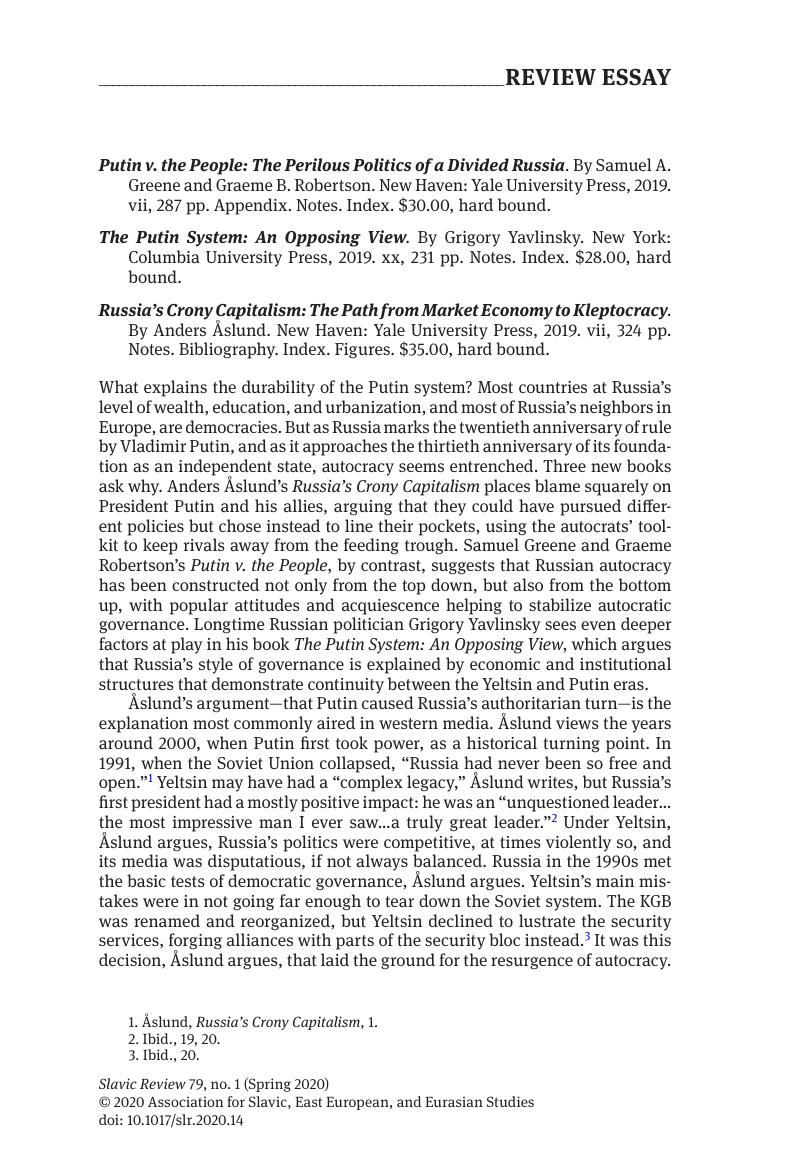Published online by Cambridge University Press: 11 May 2020

1 Åslund, Russia’s Crony Capitalism, 1.
2 Ibid., 19, 20.
3 Ibid., 20.
4 Ibid., 131.
5 Ibid., 39.
6 See Philip Hanson, “Reiderstvo: Asset Grabbing in Russia,” Chatham House, March 2014, https://www.chathamhouse.org/publications/papers/view/198133 (accessed March 3, 2020).
7 The most recent analysis is Mark Galleoti, The Vory: Russia’s Super Mafia (Yale, 2018).
8 Åslund, 152.
9 Ibid., 152.
10 Ibid., 2.
11 Ibid., 2.
12 Ibid., 38.
13 Ibid., 7.
14 Greene and Robertson, Putin v. the People, 11–12.
15 Ibid., 7.
16 Ibid., 2.
17 Ibid., 144.
18 Ibid., 116.
19 Ibid., 149.
20 Ibid., 151.
21 Ibid., 152.
22 Ibid., 147.
23 Ibid., 11–12.
24 Ibid., 15–16.
25 Ibid.
26 Ibid
27 Ibid.
28 Ibid., 15.
29 Yavlinsky, The Putin System: An Opposing View, 33.
30 Shleifer, Andrei and Treisman, Daniel, Without a Map: Political Tactics and Economic Reform in Russia (MIT, 2000), 153Google Scholar.
31 Yavlinsky, ix.
32 Ibid., 7–8.
33 Ibid., 46.
34 Bryn Rosenfeld, “Varieties of Middle Class Growth and Democratic Preference Formation” (PhD diss., Princeton University, 2015).
35 Yavlinsky, ix.
36 Åslund, 4.
37 Ibid., 13.
38 Ibid., 14.
39 Ibid., 5, 131.
40 Ibid., 5.
41 Ibid., 251.
42 Greene and Robertson, 231.
43 Ibid., 220.
44 Ibid., 220.
45 Ibid., 214, 217.
46 Ibid., 90.
47 Ibid., 208–209.
48 Yavlinsky, 190.
49 Ibid., 25, 112.
50 Ibid., 111.
51 Ibid., xv.